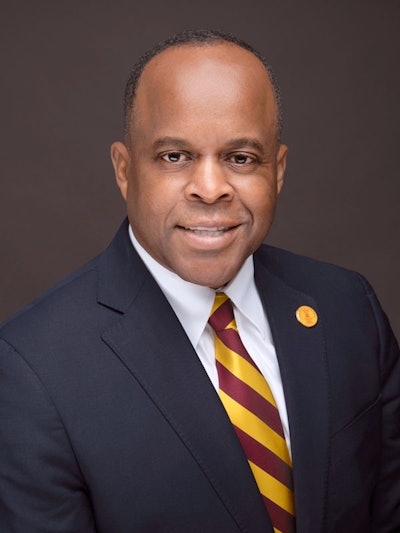Over the last year, COVID-19 brought on financial and academic disruptions to institutions across the country, forcing leaders to adapt. To provide insight into the current landscape of higher education, colleges and university presidents participated in a panel discussion on Monday at the American Association of Blacks in Higher Education’s (AABHE) virtual conference.
 Dr. Jack Thomas
Dr. Jack Thomas“A crisis reveals the most honest versions of institutions and leaders,” said Dr. Shirley M. Collado, president of Ithaca College. “It is when you are stripped down to your core and the very thing you value is being called into question.”
This past year was also a time of racial reckoning within the United States after the murders of George Floyd, Breonna Taylor and other Black Americans at the hands of police officers.
“As a Black man, who has raised two Black sons, I long for the day when I need not fear for my life or the lives of my sons living our everyday lives,” said Dr. Jack Thomas, president of Central State University, a historically Black university located in Wilberforce, Ohio.
Panelists noted that as institutions confront existing racial inequities on campus, there is a need to increase the number of people of color in higher-level administrative positions, particularly as college presidents.
“It will take a monumental effort to lead and reshape the academy,” said Collado. “We need freedom fighters, we need trailblazers and we need people who are going to stay honest to the work of students regardless of what we do.”
With students grieving and social justice protests occurring on campuses, university presidents have the responsibility to speak out, educate and lead, according to Dr. Tuajuanda Jordan, president of St. Mary’s College of Maryland.
“You cannot lead, especially during times like this, when you are just going to be quiet about something…,” she said. “You need to address it straight on. You should be passionate yet civil but clear as to what your message is.”
Leading an institution also goes beyond implementing policies and procedures. It is about creating a “human” element, according to Jordan, who is known for hosting dinners each month with her students. The interaction provides an opportunity for her to answer questions and discuss personal interests.
“Talking about those things to let them know that even though they don’t see me all the time, I am paying attention and I am absolutely human,” said Jordan. “I have some positive and negatives and they are aware of those things.”
 Dr. Tuajuanda Jordan
Dr. Tuajuanda JordanDr. Ronald S. Rochon, president of the University of Southern Indiana, also emphasized the importance of leaders acknowledging their own weaknesses in front of students. The failures of college and university presidents are not often seen or discussed.
“Tell students who you are, shake their hands, look them in the eye and tell that they too can achieve,” he added. “Hard work, grit, support, love, humility. These are the characteristics that we have to teach but we have to embody them ourselves.”
Throughout the conference, other sessions focused on racial inequities at an institutional level.
Over the years, students, faculty and staff at Columbia College Chicago voiced their concerns about the lack of a Black presence on campus and in the curriculum.
“The more students of color feel validated in a college campus environment the more likely they are to succeed,” said Dr. Shanita Akintonde, an associate professor of instruction at Columbia College.
However, almost 10 years ago, the dance department ignited long-term progress. Looking to move from a singular Eurocentric course of study to a more inclusive one, the department brought on the People’s Institute for Survival and Beyond to host workshops and reevaluate its courses. The department now requires all students to take at least one African dance class.
“The workshops shifted the constituency understanding and beliefs of race and racism by providing historical, legal and academic evidence that illustrated that race is a social construct and how race has effected society,” said Dr. Sheila V. Baldwin, an associate professor of English and creative writing at Columbia College.
Shortly thereafter, Dr. Kwang-Wu Kim, president of Columbia, appointed an academic dean and committee to organize a mandatory two-day workshop for full-time faculty and staff.
“This afforded some of the participants to realize that they were gatekeepers, the oppressors and also empowered the marginalized,” said Baldwin.
The institution also changed its hiring practices to bring in more faculty of color.
Diversity, equity and inclusion policies were also implemented within the strategic plan, curriculum and mission statement.
“When we infuse it into the curriculum, it goes into the students who then go out into the world and make a difference, we are hoping, based on what they are getting from us,” said Akintonde.
Sarah Wood can be reached at [email protected]





















